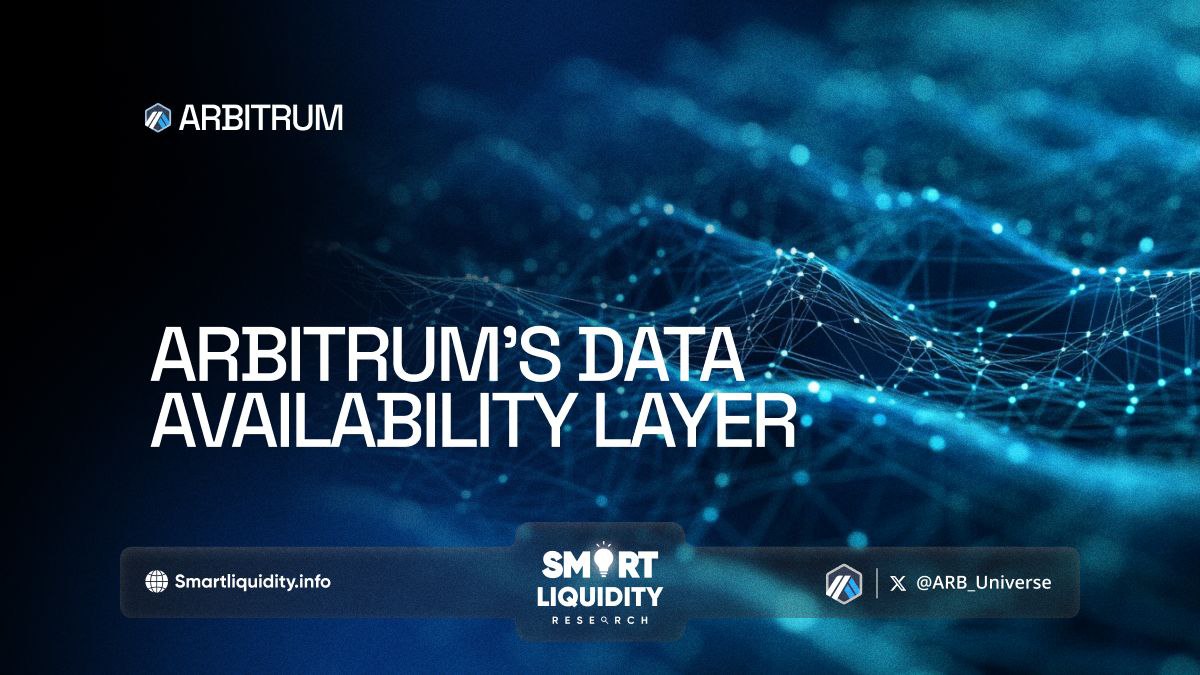Arbitrum’s Data Availability Layer: Enhancing Efficiency and Security in Layer 2 Scaling


Arbitrum’s Data Availability Layer: Enhancing Efficiency and Security in Layer 2 Scaling! As blockchain technology grows, scalability challenges become increasingly critical to solve. Arbitrum, a Layer 2 scaling solution for Ethereum, has implemented a specialized Data Availability Layer (DAL) to optimize how data is managed, stored, and accessed on its network.
This article explores Arbitrum’s DAL’s importance, how it works, and its potential impact on decentralized finance (DeFi) and Web3 applications.
Understanding Data Availability in Layer 2 Scaling
In the blockchain ecosystem, data availability refers to ensuring that all necessary data for transaction verification and security is accessible to users. In Layer 2 scaling, data availability is crucial to maintaining the integrity of transactions without overloading the Ethereum mainnet.
Arbitrum’s Data Availability Layer addresses this by separating transaction execution from data storage. With its DAL, Arbitrum enables off-chain transactions to be processed quickly while securely anchoring critical data on Ethereum. This approach not only reduces transaction costs but also maintains Ethereum-level security.
Key Benefits of Arbitrum’s Data Availability Layer
- Increased Scalability
Arbitrum significantly increases transaction throughput by reducing the amount of data stored on-chain. This makes the network suitable for high-frequency applications, such as DeFi trading platforms and on-chain gaming. - Lower Gas Fees
One of the primary motivations behind Layer 2 solutions is lowering transaction costs. Arbitrum’s DAL optimizes data storage, which translates to lower gas fees for users, a major advantage for DeFi users and developers - Enhanced Security and Decentralization
Arbitrum ensures that even though transactions happen off-chain, their data is still securely anchored to Ethereum. This decentralized approach strengthens security while maintaining the open nature of blockchain technology. - Optimized Resource Allocation
With the DAL, Arbitrum achieves a balance between resource usage and network efficiency, allowing Ethereum to handle complex smart contracts without compromising its decentralized ethos.
How the DAL Supports DeFi and Web3
DeFi platforms rely on speed, low fees, and security to attract users and liquidity providers. Arbitrum’s DAL enhances these factors by streamlining how data is managed on its network. DeFi protocols that require high throughput, such as automated market makers (AMMs) and decentralized exchanges (DEXs), can benefit from Arbitrum’s efficiency, attracting more users to Layer 2 platforms.
For Web3 developers, the DAL offers a robust infrastructure to build decentralized applications (dApps) without worrying about Ethereum’s network congestion. Arbitrum provides a scalable environment where Web3 innovation can flourish, accelerating adoption across various industries, from gaming to NFTs.
Looking Ahead: Arbitrum’s Role in Ethereum’s Ecosystem
As Ethereum upgrades, Layer 2 solutions like Arbitrum are crucial for scaling decentralized applications. Arbitrum is leading advancements in data availability, potentially inspiring similar innovations in other Layer 2 networks.
With its commitment to scalability, security, and cost-efficiency, Arbitrum is paving the way for a more accessible and user-friendly blockchain experience. As adoption grows, we can expect Arbitrum’s Data Availability Layer to be a game-changer in the evolution of Ethereum and beyond.




